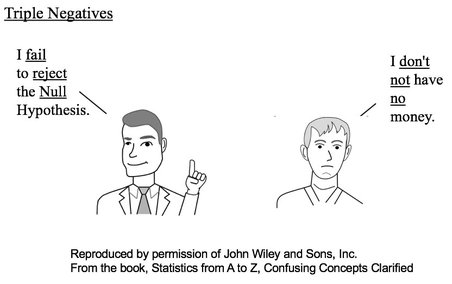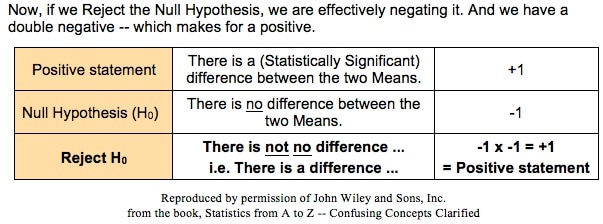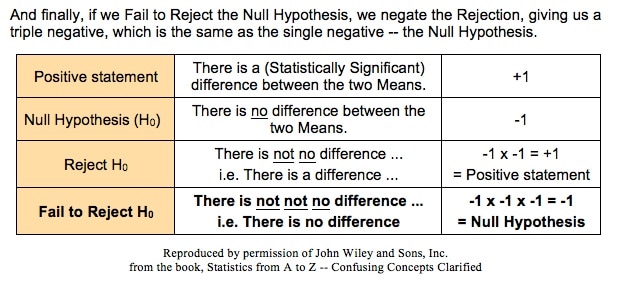|
In Hypothesis Testing, "Fail to Reject the Null Hypothesis" is one of two possible conclusions to be drawn from the test. The other is "Reject the Null Hypothesis." We are all taught in elementary school to avoid using double negatives, like "I don't have no money." However, statistics goes beyond the double negative to an even more confusing triple negative: "Fail to Reject the Null Hypothesis." Fail, Reject, and Null are all negative words This is like saying, "I don't not have no money." That statement confuses a lot of people. It may help to understand better if we represent a positive statement by +1 and a negative by -1. In Hypothesis Testing, we are usually trying to determine whether there is a Statistically Significant difference, change, or effect. For more on how to clarify this confusing concept, please see my video, Fail to Reject the Null Hypothesis. It has received very good reviews, like these:
1 Comment
|
AuthorAndrew A. (Andy) Jawlik is the author of the book, Statistics from A to Z -- Confusing Concepts Clarified, published by Wiley. Archives
March 2021
Categories |







 RSS Feed
RSS Feed